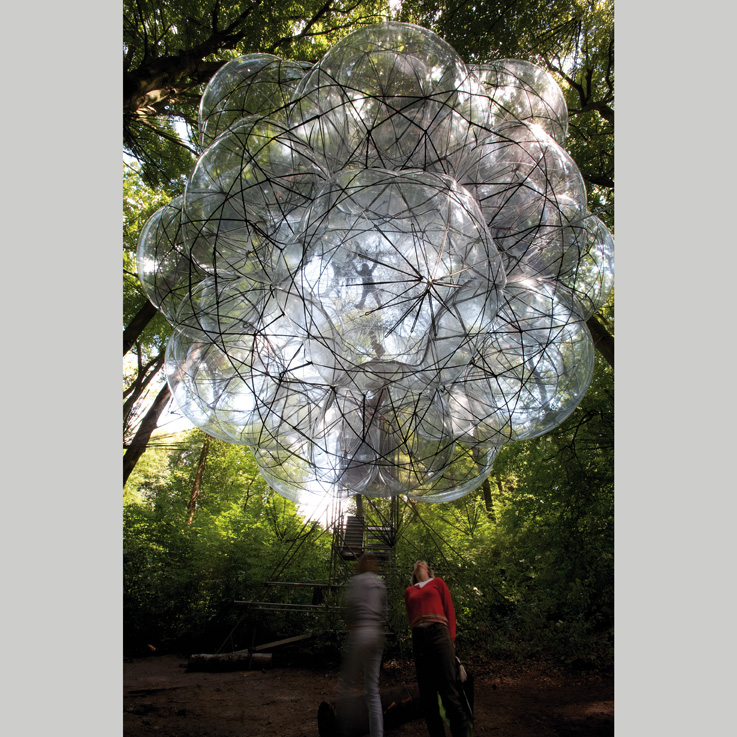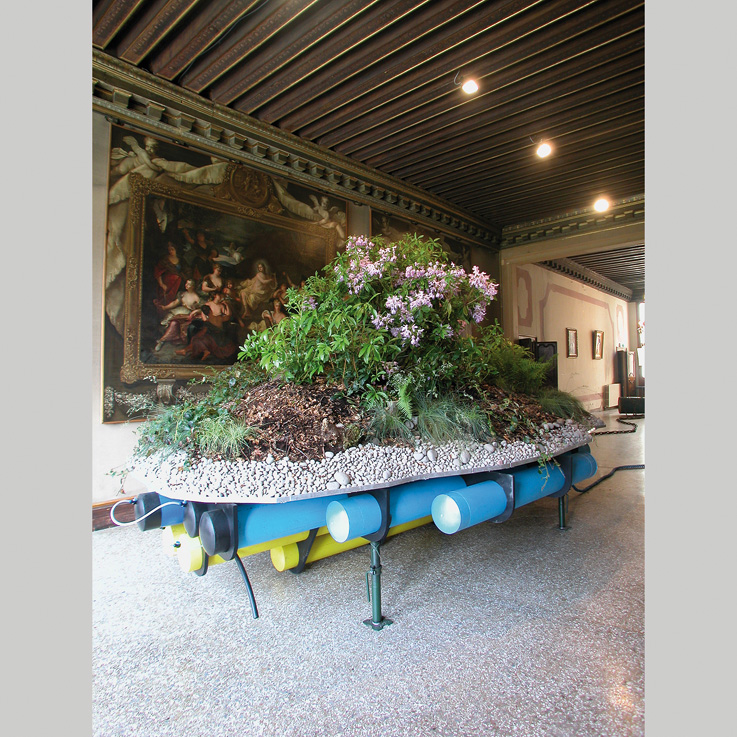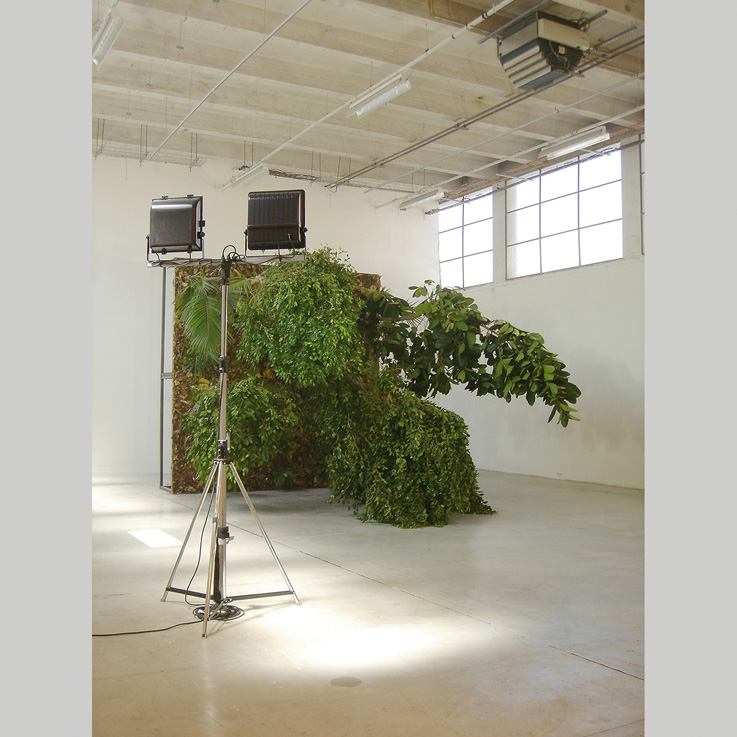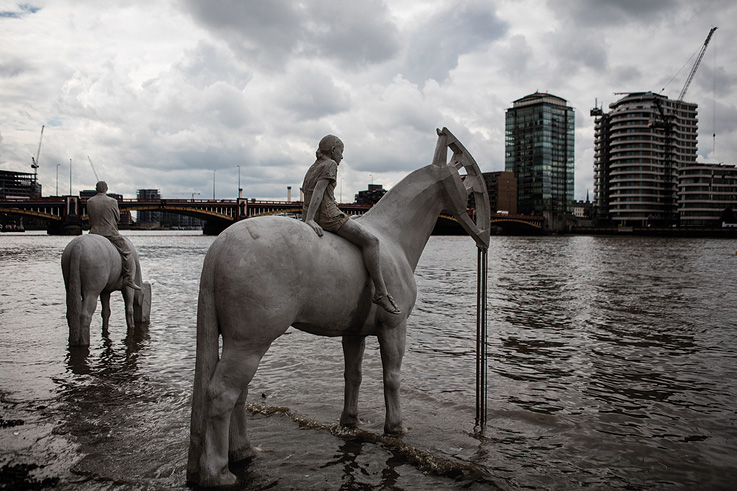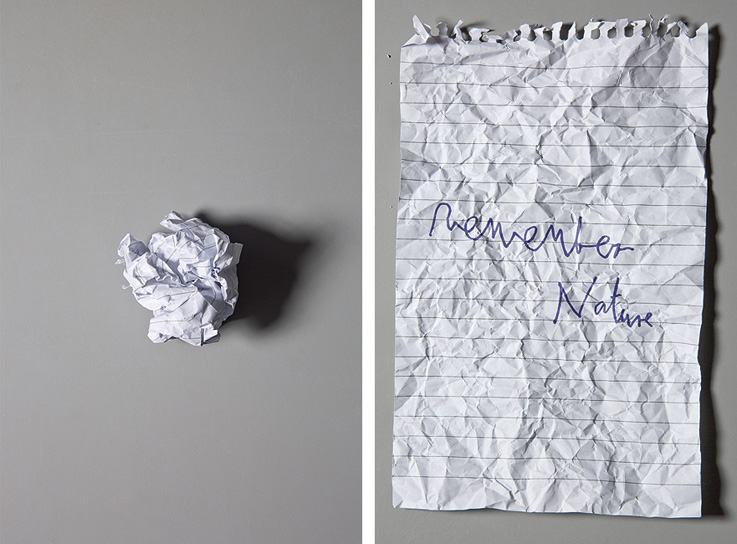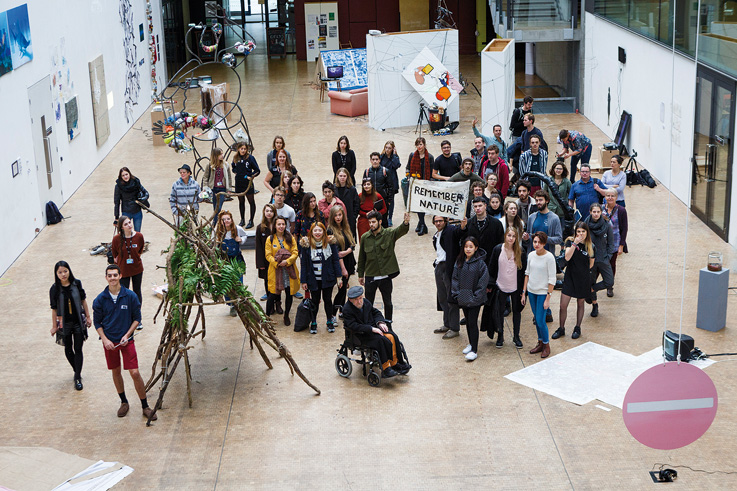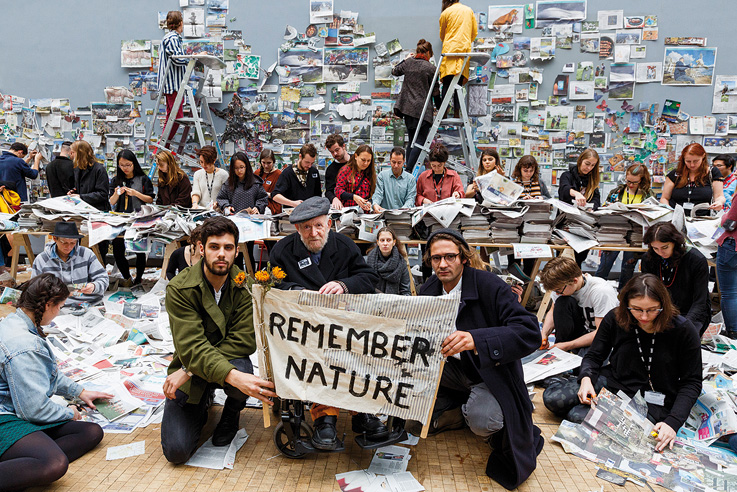Art and nature have always been linked to human concepts
Palaeolithic man represented nature as something symbolic and magical. From a classical point of view, art has always been in search of its imitation. However, things have changed and contemporary artists resort to protest in order to denounce human intervention in nature. The COP21 of art.
Tom├Īs Saraceno. Flying Greenhouse, 2008. Installation Views, Sonsbeek 2008, Holland. Photo: Tom├Īs Saraceno Studio.
The human relationship with nature was perhaps the first subject to appear in the history of art. Its graphic representations have appeared in the Palaeolithic period and throughout history, in one form or another. It has always been present as a preferential and referential theme in the arts. Nature has also been a source of inspiration and happiness. The great masters of the past taught us how to appreciate it from different perspectives. Today, things have changed and what concerns us in 2016 is the preservation of nature when faced with the serious problem that its permanent demise presents us with. Therefore, it is commonplace to see artists from different disciplines who react to and engage with the news that reaches us on an everyday basis about disasters sparked by climate change and the depletion of natural resources. Moreover, the artistic representation of nature is closely linked to the social perception of the natural world, while at the same time, artists contribute to a progressive change in the way in which we relate to it and visualise it. During recent decades, there has been a transition in the representation of nature that, in many cases, is the result of a fusion of various intellectual, sociological, political and artistic ideas. All that remains of this idealisation of the past is memory. The current generation of artists has focused on presenting to us the reoccurring theme of manŌĆÖs ever-more threatening intervention in nature. Earth, air, fire, water.
Simon Starling. Island for Weeds, 2003. From┬ĀRadical Nature exhibition. 2009 – Barbican.
AIR.Nature as a genre is closely related to the ideas that we associate with the sublime and the picturesque. The works of Tom├Īs Saraceno are an example of the result of continuous investigation, in which art, architecture, natural sciences and engineering converge. His floating sculptures and interactive installation encourage us to explore new and sustainable ways of relating to nature that could take place in an imaginary world, an unreal world that lies beyond Earth. One of this artistŌĆÖs most representative works is Flying Green House (2008) an artistic experiment that was conducted in Sonsbeek. In this location in the Netherlands, Saraceno had the opportunity to construct a floating greenhouse, made using 32 transparent balloons filled with helium. The sustainable greenhouse was made up of a giant central balloon with another 31 smaller balloons around it that were held together by a net. Inside of the larger balloon were plants that were able to grow inside while the small balloons guaranteed that the temperature remained constant. Flying Green House had a total diameter of ten meters and was hung between trees in Park Sonsbeek. Saraceno is developing his work with a team of architects, artists and construction technicians, creating large balloon constructions that are meant to enable the free movement of people and goods across the whole planet. The artist studied architecture at the National University of Buenos Aires, Argentina, and in 2009 attended the Space Studies Programme at NASA Ames. However, his utopic and revolutionary ideas have lead him to the art world. Saraceno dreams of a free world in which people donŌĆÖt need to identify themselves in order to travel and, given that this is impossible on Earth, prefer to look to the skies. The architect also explores other current issues in his work, such as overpopulation and poverty.
Henrik H├źkansson, Fallen Forest, 2006. From┬ĀRadical Nature exhibition. 2009 – Barbican.
EARTH.Other contemporary artists demonstrate their preferences in exploration and direct confrontation of the marks left by man and the natural world. This is the case of artist Henrik H├źkansson. In his work entitled Fallen Forest (2006), H├źkansson analyses nature through a forest that has been turned on one side and must grow horizontally. The work was constructed over sixteen square metres and seeks to denounce the unequal relationship between man and nature.
The 2005 Turner Prize winner Simon Starling describes his work as a ŌĆ£physical manifestation of a thought processŌĆØ. In 2003, the artist represented Scotland at the Venice Biennale with a work entitled Island for Weeds. Island for Weeds is an island consisting of a bed full of rhododendrons, a plant that, because its destructive nature, is classified as a weed. It arrived in Scotland from Spain in the 18th century. The work is the result of an investigation conducted by Starling in Heathland, Scotland. For some time the artist researched these plants as well as the regionŌĆÖs history and environment. Heathland has a very delicate ecosystem that is constantly under natural and human threat. Starling wanted to study the processes that intervene in the transformation of an object or substance into another. His works and installations represent a series of ideas the artist has on our relationship with nature, technology and economy. The artist studied photography and, like many photographers, his work extends far beyond just photography production. Influenced by conceptual art from the 1960s and early 70s, StarlingŌĆÖs work focuses on aspects related to society, economy, politics, culture and art history as means of being able to understand art as a faithful imitation of reality and a form of politics.
Last November, half of the worldŌĆÖs leaders met in Paris for the COP21 conference to attempt to negotiate an agreement and slow down climate change. The planetŌĆÖs climate changes over time, however the current warming period is occurring very quickly. Scientists are worried that the heating caused by man will have quick and serious repercussions for the stability of the planetŌĆÖs climate. The effects of climate change are visible in both vegetation and animals. The impact of climate change is uncertain, although it is predicted that changes in the not-so-distant future could lead to water shortages and radical changes in food production. It could also increase the number of displaced people worldwide and the number of deaths by flooding, storms, heat waves and drought. With this in mind, it is hardly surprising that many artists have decided to join the protest and focus attention on a problem that affects us all.
Jason deCaires Taylor. (Sculptor and phtographer) The Rising Tide. ┬® Jason deCaires Taylor.<www.underwatersculpture.com>
WATER. Last September 1st, Jason deCaires TaylorŌĆÖs first art installation was inaugurated in London. The installation of underwater sculptures entitled The Rising Tide aimed to draw attention to our permanent dependence on fossil fuels and the apocalyptic result of climate change. The Rising Tide sculptures, hidden under water, appear and disappear depending on the tides at Vauxhall. The work is comprised of four life-sized horses and their riders, standing and symbolising the origins of industrialisation and the importance of the Thames and its key role in the city of London. It also represents the cityŌĆÖs great history as a constantly-evolving centre of culture, industry and commerce. The work also intends to serve as a warning about the dark future that looms over the world. Born in 1974 to an English father and Guyanese mother, Taylor grew up between Europe and Asia, where he spent a large part of his childhood exploring MalaysiaŌĆÖs coral reefs. He was educated in South-East England and went on to study Sculpture at the London Institute of Arts in 1998 before training as a diving instructor and underwater naturalist. Taylor is also an award-winning underwater photographer, famous for his dramatic images that capture the effects of the oceansŌĆÖ metamorphosis of his sculptures. In 2006 the artist founded and created the worldŌĆÖs first underwater sculpture park, located off the East coast of Granada in the Antilles. It has since been catalogued as one of the 25 Wonders of the World by National Geographic. In 2009, he co-founded MUSA (The Underwater Museum of Art). This monumental collection holds more than 500 of his sculptural works, submerged off the coast of Cancun in Mexico. Jason deCaires TaylorŌĆÖs projects are examples of marine conservation that seek to promote environmental awareness and promote social change and the development of an appreciation for the natural beauty of the underwater world.
Remember Nature: A Call to Action by Gustav Metzger. Serpentine Galleries, Central St Martins, UAL. November 4, 2015. ┬® London Fieldworks.
FIRE. Under the title Remember Nature, another creative protest that aims to denounce climate change, pollution and destruction was developed in London last November 4th, led by the political activist and artist Gustav Metzger. Metzger lives in London, although he was born in Nuremberg, Germany, in 1926. For the last 65 years, his work has focused on exploring forces that are opposed yet interdependent, such as destruction and creation. In 1959, he conceived the concepts of ŌĆśauto-destructive artŌĆÖ and ŌĆśauto-creative artŌĆÖ, displaying works that reflected the destructive nature of the political and economic systems. The political activist and artist is known for his participation in the Extinction Marathon, at LondonŌĆÖs Serpentine Gallery in 2014, and for his acclaimed exhibition, Decades 1959-2009, also at the Serpentine Gallery in 2009, which explored the theme of climate change and its catastrophic effects. Last November, Metzger called art professionals from all over the world together for a day of action and encouraged them to take part in Remember Nature. The artistŌĆÖs call to action urged art professionals and students from all art disciplines to create new artworks with the aim of addressing global issues, such as extinction, climate change and environmental pollution. The event took place at Central Saint MartinŌĆÖs and also called for the UK-wide participation of different art schools on the same day. Metzger declared: ŌĆ£This call to action seeks to achieve as much participation as possible from the art world. It is our privilege and our duty to be at the forefront of this fight. We have no choice but to continue along the road that leads from ethics to the aesthetic. We live in a society that is suffocated by waste.ŌĆØ
Remember Nature: A Call to Action by Gustav Metzger. Serpentine Galleries, Central St Martins, UAL. November 4, 2015. ┬® 2015 Tristan Fewings/Getty.
Text: Covadonga Garc├Ła


